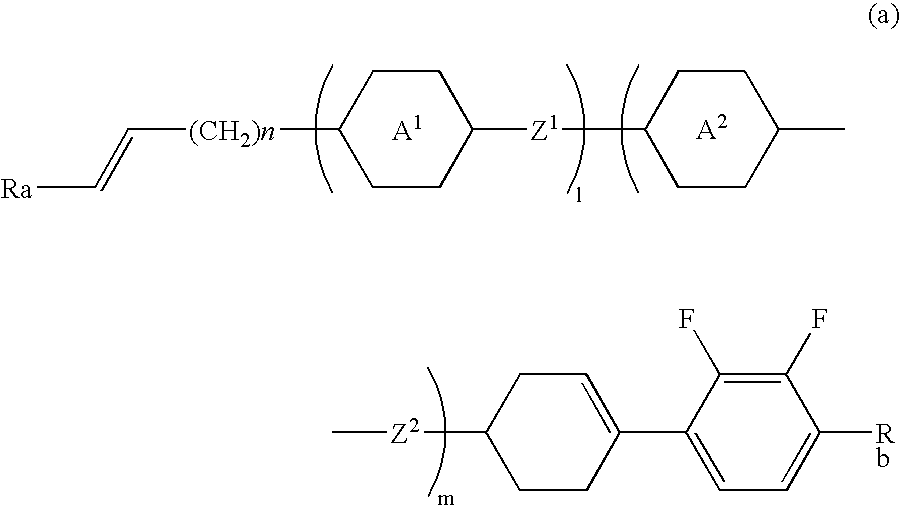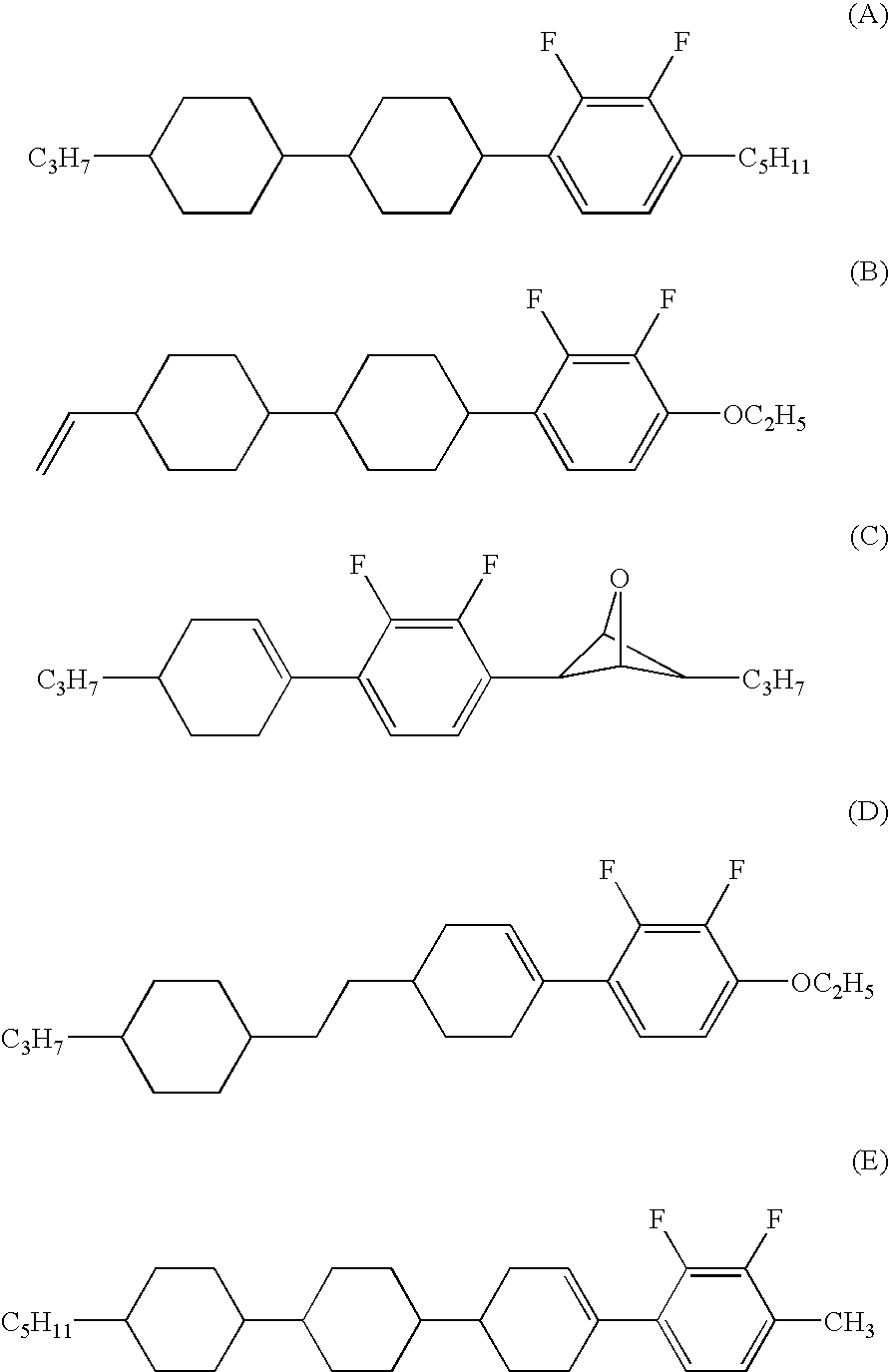Cyclohexene derivative having alkenyl, liquid crystal composition and liquid crystal display device
- Summary
- Abstract
- Description
- Claims
- Application Information
AI Technical Summary
Benefits of technology
Problems solved by technology
Method used
Image
Examples
example 1
Synthesis of 4-(4-ethoxy-2,3-difluorophenyl)-trans-4′-vinylbicyclohexyl-3-ene (No. 132)
[0212]
[0213]First Step: 6.1 g of well dried magnesium and 20 mL of THF were placed in a reactor under nitrogen atmosphere, and heated to 40° C. 59.7 g of 1-bromo-4-ethoxy-2,3-difluorobenzene (1) dissolved in 300 mL of THF was slowly added dropwise thereto at a temperature range of from 40 to 60° C., followed by stirring for 60 minutes. Thereafter, 50.0 g of 4-(1,4-dioxaspiro[4,5]dec-8-yl)cyclohexanone (2) dissolved in 150 mL of THF was slowly added dropwise thereto at a temperature range of from 50 to 60° C., followed by stirring for 60 minutes. After cooling the resulting reaction mixture to 30° C., the reaction mixture was mixed with 900 mL of a 3% ammonium chloride aqueous solution and 500 mL of toluene cooled to 0° C. in a vessel and separated into an organic layer and an aqueous layer by standing still, so as to attain extraction. The resulting organic layer was fractionated and washed with w...
example 2
Synthesis of 4-(4-ethoxy-2,3-difluorophenyl)-trans-4′-propenylbicyclohexyl-3-ene (No. 152)
[0221]
[0222]10.2 g of well dried ethyltriphenylphosphonium bromide and 40 mL of THF were mixed under nitrogen atmosphere and cooled to −10° C. Thereafter, 3.0 g of potassium t-butoxide (t-BuOK) was added thereto by dividing into 3 portions at a temperature range of from −10 to −5° C. After stirring at −10° C. for 60 minutes, 8.0 g of the compound (7) dissolved in 16 mL of THF was added dropwise thereto at a temperature range of from −10 to −5° C. After stirring at 0° C. for 30 minutes, the reaction mixture was added to and mixed with a mixture of 100 mL of water and 50 mL of toluene, which was separated into an organic layer and an aqueous layer by standing still, so as to attain extraction to the organic layer. The resulting organic layer was fractionated and washed with water, followed by drying over anhydrous magnesium sulfate. A residue obtained by concentrating the resulting solution under...
example 3
Synthesis of trans-4′-but-3-enyl-4-(4-ethoxy-2,3-difluorophenyl)-bicyclohexyl-3-ene (No. 172)
[0225]
[0226]First Step: 29.5 g of well dried methoxymethyltriphenylphosphonium chloride and 120 mL of THF were mixed under nitrogen atmosphere and cooled to −30° C. Thereafter, 9.7 g of potassium t-butoxide (t-BuOK) was added thereto by dividing into 4 portions at a temperature range of from −30 to −20° C. After stirring at −20° C. for 60 minutes, 25.0 g of the compound (7) dissolved in 50 mL of THF was added dropwise thereto at a temperature range of from −20 to −10° C. After stirring at 0° C. for 30 minutes, the reaction mixture was added to and mixed with a mixture of 400 mL of water and 200 mL of toluene, which was separated into an organic layer and an aqueous layer by standing still, so as to attain extraction to the organic layer. The resulting organic layer was fractionated and washed with water, followed by drying over anhydrous magnesium sulfate. A residue obtained by concentrating...
PUM
| Property | Measurement | Unit |
|---|---|---|
| Fraction | aaaaa | aaaaa |
| Fraction | aaaaa | aaaaa |
| Fraction | aaaaa | aaaaa |
Abstract
Description
Claims
Application Information
 Login to View More
Login to View More - R&D
- Intellectual Property
- Life Sciences
- Materials
- Tech Scout
- Unparalleled Data Quality
- Higher Quality Content
- 60% Fewer Hallucinations
Browse by: Latest US Patents, China's latest patents, Technical Efficacy Thesaurus, Application Domain, Technology Topic, Popular Technical Reports.
© 2025 PatSnap. All rights reserved.Legal|Privacy policy|Modern Slavery Act Transparency Statement|Sitemap|About US| Contact US: help@patsnap.com



